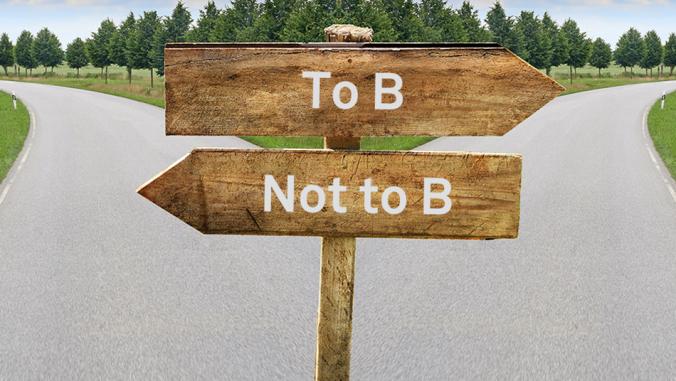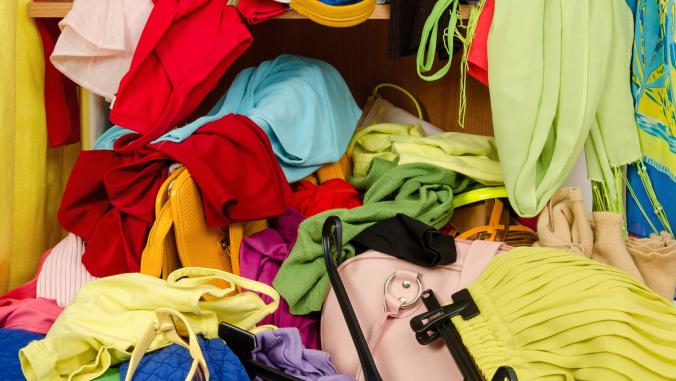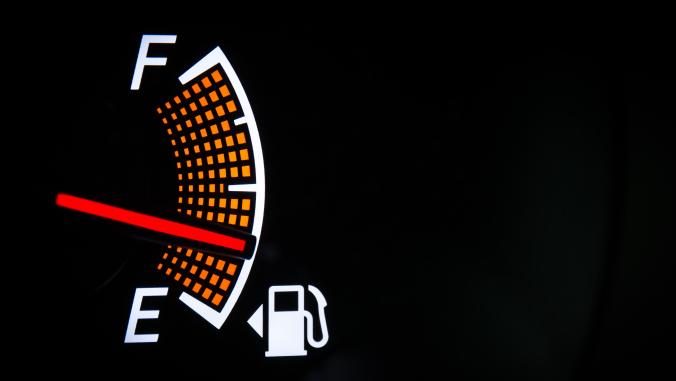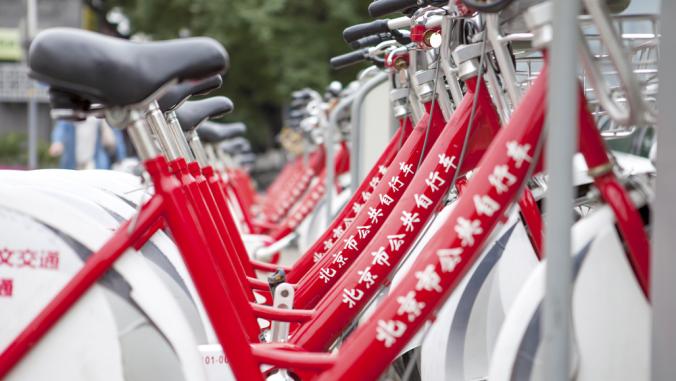Suzlon's Shifting Winds
Several European countries get 10 percent to 20 percent of their electricity from wind. In the U.S. wind provides about 1 percent of the electricity, so there's plenty of room for growth. But everything depends on the banks Image courtesy of Suzlon Energy -- and on Washington, write Marc Gunther.

"How's business?" I ask Andy Cukurs, who runs the U.S. subsidiary of Suzlon Energy, the Indian wind-industry giant.
"The banks are unwilling to lend," he tells me, shaking his head. "It will slow down the industry this year."
But not for much longer than that, he hopes. Several European countries get 10 percent to 20 percent of their electricity from wind. "There's no reason why we in the U.S. can't get to those levels," Cukurs says. One big help -- the fact that production tax credits for wind energy were extended for three years in the $787-billion economic recovery package that became law last month.
To learn more about Suzlon, I had lunch with Cukurs and Duncan Koerbel, Suzlon's chief reliability officer (the first time I'd met anyone with that title) the other day at the Old Ebbitt Grill in Washington. I'd first heard about the company a couple of years ago when I interviewed Tulsi Tanti, Suzlon's founder and CEO, at a FORTUNE conference in New Delhi.
Tulsi Tanti -- don't you love that name? -- got into the wind business in 1995 quite by accident: He owned a textile firm and was frustrated by the rising cost and unreliability of electricity from India's state-run power companies. So he built himself a wind turbine, and decided to switch gears. Since then, Suzlon Energy has doubled its revenues every year -- a streak that will end in 2009 -- and today it is the world's fifth large wind turbine manufacturer. (Vestas is No. 1) The company employs 13,000 people.
Suzlon has installed more than half of the wind turbines in India. It has R&D centers in Germany and the Netherlands. It bought a Belgian gearbox maker, Hansen, several years ago and opened up a U.S. factory in Pipestone, Minnesota, in 2006. Talk about globalization! About 400 people work in Pipestone and another 400, including Cukurs, are based in Chicago. The U.S. unit of Suzlon operates 22 wind power plants in 13 states, from Oregon to Pennsylvania, with about 1200 megawatts of generating capacity.
But while Suzlon is obviously a global business, it needs to be local, too. "You want to build factories in proximity to where you are going to use the equipment," Cukurs tells me. Wind turbines are "big and very heavy," he says, so shipping towers and blades across oceans is expensive and impractical. Putting them up is no simple matter, either. About two dozen trucks are required just to deliver the parts of the crane needed to erect them. "It's a choreography of very big things that need to be put together on remote job sites," Cukurs says.
Maintenance also requires a local presence. One of Suzlon's big blades cracked last year and fell off a turbine near a cornfield near Peoria, Illinois. The company's shares soon plummeted as well. Maybe this is why Suzlon, which says it has fixed the problem, needs a "chief reliability officer."
Cukurs, who is 46, has a B.S. in mechanical engineering from Illinois and an MBA from the University of Chicago. In a previous job with a Danish engineering and construction firm, he oversaw construction of a Gatorade plant in China and a Baskin & Robbins factory near Moscow. He joined Suzlon in 2004.
The U.S. wind industry had its best year ever in 2008, he told me. About 8,350 megawatts of new wind generation came on line, the rough equivalent of eight coal-fired plants. That was more than 40 percent of the new power-generating capacity built in the U.S. last year, and it was enough to push the U.S. past Germany as the world's leading wind power generator. Wind currently supplies only about 1 percent of the electricity used in the U.S., so there's plenty of room for growth.
Suzlon has enough orders to keep its factory running through the rest of 2009, so unlike some other wind companies, it hasn't laid off workers during the downturn. Going forward, wind should be a good business, Coal plants are politically unpopular (for good reason), nuclear plants take a decade to build and utilities want to hedge against the rising cost of natural gas.
But everything depends on the banks -- and on Washington. If the banks start lending again and if President Obama and Congress push through renewable energy incentives and regulate greenhouse gases, the wind industry should thrive. If not, well, we'll fail to capture an available source of clean energy and miss the opportunity to create more green jobs.
"The banks are unwilling to lend," he tells me, shaking his head. "It will slow down the industry this year."
But not for much longer than that, he hopes. Several European countries get 10 percent to 20 percent of their electricity from wind. "There's no reason why we in the U.S. can't get to those levels," Cukurs says. One big help -- the fact that production tax credits for wind energy were extended for three years in the $787-billion economic recovery package that became law last month.
To learn more about Suzlon, I had lunch with Cukurs and Duncan Koerbel, Suzlon's chief reliability officer (the first time I'd met anyone with that title) the other day at the Old Ebbitt Grill in Washington. I'd first heard about the company a couple of years ago when I interviewed Tulsi Tanti, Suzlon's founder and CEO, at a FORTUNE conference in New Delhi.
Tulsi Tanti -- don't you love that name? -- got into the wind business in 1995 quite by accident: He owned a textile firm and was frustrated by the rising cost and unreliability of electricity from India's state-run power companies. So he built himself a wind turbine, and decided to switch gears. Since then, Suzlon Energy has doubled its revenues every year -- a streak that will end in 2009 -- and today it is the world's fifth large wind turbine manufacturer. (Vestas is No. 1) The company employs 13,000 people.
Suzlon has installed more than half of the wind turbines in India. It has R&D centers in Germany and the Netherlands. It bought a Belgian gearbox maker, Hansen, several years ago and opened up a U.S. factory in Pipestone, Minnesota, in 2006. Talk about globalization! About 400 people work in Pipestone and another 400, including Cukurs, are based in Chicago. The U.S. unit of Suzlon operates 22 wind power plants in 13 states, from Oregon to Pennsylvania, with about 1200 megawatts of generating capacity.
But while Suzlon is obviously a global business, it needs to be local, too. "You want to build factories in proximity to where you are going to use the equipment," Cukurs tells me. Wind turbines are "big and very heavy," he says, so shipping towers and blades across oceans is expensive and impractical. Putting them up is no simple matter, either. About two dozen trucks are required just to deliver the parts of the crane needed to erect them. "It's a choreography of very big things that need to be put together on remote job sites," Cukurs says.
Maintenance also requires a local presence. One of Suzlon's big blades cracked last year and fell off a turbine near a cornfield near Peoria, Illinois. The company's shares soon plummeted as well. Maybe this is why Suzlon, which says it has fixed the problem, needs a "chief reliability officer."
Cukurs, who is 46, has a B.S. in mechanical engineering from Illinois and an MBA from the University of Chicago. In a previous job with a Danish engineering and construction firm, he oversaw construction of a Gatorade plant in China and a Baskin & Robbins factory near Moscow. He joined Suzlon in 2004.
The U.S. wind industry had its best year ever in 2008, he told me. About 8,350 megawatts of new wind generation came on line, the rough equivalent of eight coal-fired plants. That was more than 40 percent of the new power-generating capacity built in the U.S. last year, and it was enough to push the U.S. past Germany as the world's leading wind power generator. Wind currently supplies only about 1 percent of the electricity used in the U.S., so there's plenty of room for growth.
Suzlon has enough orders to keep its factory running through the rest of 2009, so unlike some other wind companies, it hasn't laid off workers during the downturn. Going forward, wind should be a good business, Coal plants are politically unpopular (for good reason), nuclear plants take a decade to build and utilities want to hedge against the rising cost of natural gas.
But everything depends on the banks -- and on Washington. If the banks start lending again and if President Obama and Congress push through renewable energy incentives and regulate greenhouse gases, the wind industry should thrive. If not, well, we'll fail to capture an available source of clean energy and miss the opportunity to create more green jobs.





